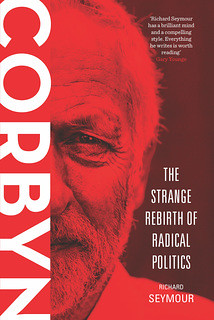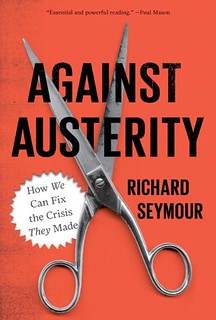Tuesday, April 19, 2005
Resistance and representation. posted by Richard Seymour
The Gulf War did not happen, except on television. Did Baudrillard mean that there was no fighting, no death, no murder of civilians? In fact, militating against his own philosophical extremities, Baudrillard said that "What's happening on the ground there in Iraq, it's so vile. It's enough to drive you into a depression or into a rage. As an abstract problem of simulation, the war is exciting, but in the real, I experience the same anger as others." There is reality, after all. His argument was that the 'war' was an ideological construct which did not refer to what was actually taking place (or, as Bill Hicks did once put it, "there never was a war ... a war is where two armies are fighting"). True enough, what we experience as 'the war in Iraq' - an ecstatic experience for Fox News watchers, who were treated to blonde, collagen-lipped newsreaders enthusing about Navy SEALS - is indeed a simulacrum, a narrative fiction.For instance, Patrick Cockburn wrote recently that "one reason why Washington can persuade the outside world that its venture in Iraq is finally coming right is that it is too dangerous for reporters to travel outside Baghdad or stray far from their hotels in the capital ... Most violent incidents in Iraq go unreported. We saw one suicide bomb explosion, clouds of smoke and dust erupting into the air, and heard another in the space of an hour. Neither was mentioned in official reports. Last year US soldiers told the IoS that they do not tell their superiors about attacks on them unless they suffer casualties. This avoids bureaucratic hassle and "our generals want to hear about the number of attacks going down not up". This makes the official Pentagon claim that the number of insurgent attacks is down from 140 a day in January to 40 a day this month dubious".
Similarly, in the interview with Les Roberts linked below, the leading scientist behind the Lancet report complains that: "I get very angry about the coverage of Fallujah. I heard a show last week on public radio in the US. They said that it is believed that half the 200,000 people who used to live in the city had returned. Well, the ministry of health told us the population used to be 310,000." How many times have you heard that? The disappearance of 110,000 people? Unless you're a believer in the supernatural, the obvious conclusion is that what we are seeing on the television and in newspapers is not a representation of the reality in Iraq, but a confection of lies.
The most obvious way in which the Iraq story is being 'produced' for us (and quite successfully) has been in the way the Iraqi resistance has been understood variously as head-choppers, suicide-bombers, Saddam-loyalists, fanatics or corrupt mercenaries being directed from Syria by a lunatic conspiracy between Ba'athists and Al Qaeda. The US-sponsored television network al-Iraqiya creates a spectacle for Iraqi viewers of 'terrorists' 'confessing' to murders of people who are in fact alive and well, to receiving money or intimidation for their efforts from commanders with sexual proclivities designed to scandalise innocent minds. Michael Schwartz dealt one devastating blow to that picture of a command and control structure, drawing on CIA analysis to show that the Iraqi resistance, at least the Sunni component which has been most vilified, is largely dispersed, lacking central control by either Ba'athist or clerics or 'foreign fighters', and is typically composed of nationalists offended by the occupation of their country. Now, another sharp dose of the reality principle has been injected by M Junaid Alam, in this excellent article .
It has been known for some time that the extremist Wahabbi element in the resistance, materialised for ghouls by the video footage of human beings having their heads hacked off with a short-bladed knife by - who else? - Abu Musab al-Zarqawi, is responsible for a tiny minority of attacks, (but also the bloodiest and most spectacular). They have, by targeting civilians in a bid to create civil war between Sunni and Shi'ite, claimed more victims than all the rest of the resistance combined. Yet, as Alam shows , the number of attacks against civilians is precisely tiny in comparison to the number directed against coalition troops. Attacks specifically targeting civilian areas make up less than 500, as do attacks on the new Iraqi police, on contractors and on public properties. The overwhelming bulk of attacks, numbering approximately 3,200, are directed against coalition forces. Even the New York Times' own graphic , working from DIA figures, show that only a fraction of resistance attacks are directed against civilians. I sense some unease on your part. Incredulity, perhaps. It can't be true! you say. I've seen it on the telly, they're bastards! Well, as Chico Marx once said, who are you going to believe - me or your own eyes?
For the sake of didactic hygeine, it is worth remarking that it is rather fanciful to assume that none of the attacks by genuine resistance groups have been conducted in ways likely to cause a large number of civilian deaths. However, part of the problem has been that as there is no national political unity, no overarching group (like, for example, the FLN) which can say "we did it" or "we denounce this". That said, there are efforts within the resistance to contain those who kill Iraqis. Also, it may be heartless to observe that at least theirs is a just war against occupation and that mistakes will be made - but morality lessons from supporters of the intentional mass murder in Fallujah simply don't sit well.
Consequences? The simulation of reality is not, contra Baudrillard, free-floating. The sign is not totally divorced from reality; rather it produces reality in certain ways, using the rough material provided by witness and official claim. The gap between the real and the phoney still matters. What would seriously disrupt the flow of dissimulation from the Pentagon through military chiefs and embedded correspondents to viewers and readers would be unity of political purpose and action by and within the resistance. By forming even a tentative united, patriotic front, Sunni and Shi'ite groups could both rein in the lunatics (including those on the Shi'ite side who beat students for listening to 'unhealthy' music), while exerting more control over how they are presented.
Malcolm X once observed that whether one is perceived as a monster or a freedom fighter is largely in the hands of who controls the image. "The mau mau," he noted ironically, "weren't image-conscious". They were concerned only with how to free themselves from what we now know to have been an even more brutal and immoral colonial domination than was imagined by anti-imperialists at the time. Having succeeded, within a very short space of time Jomo Kenyatta had become a 'moderate' among the Kikuyu, whom Western leaders prayed would not be overthrown by a more extreme force. "Yes," X chuckled, "they're praying, and they should..."
While Iraqis tend to the liberation of their country, we can tend to the prostration of Bush and his allies.










